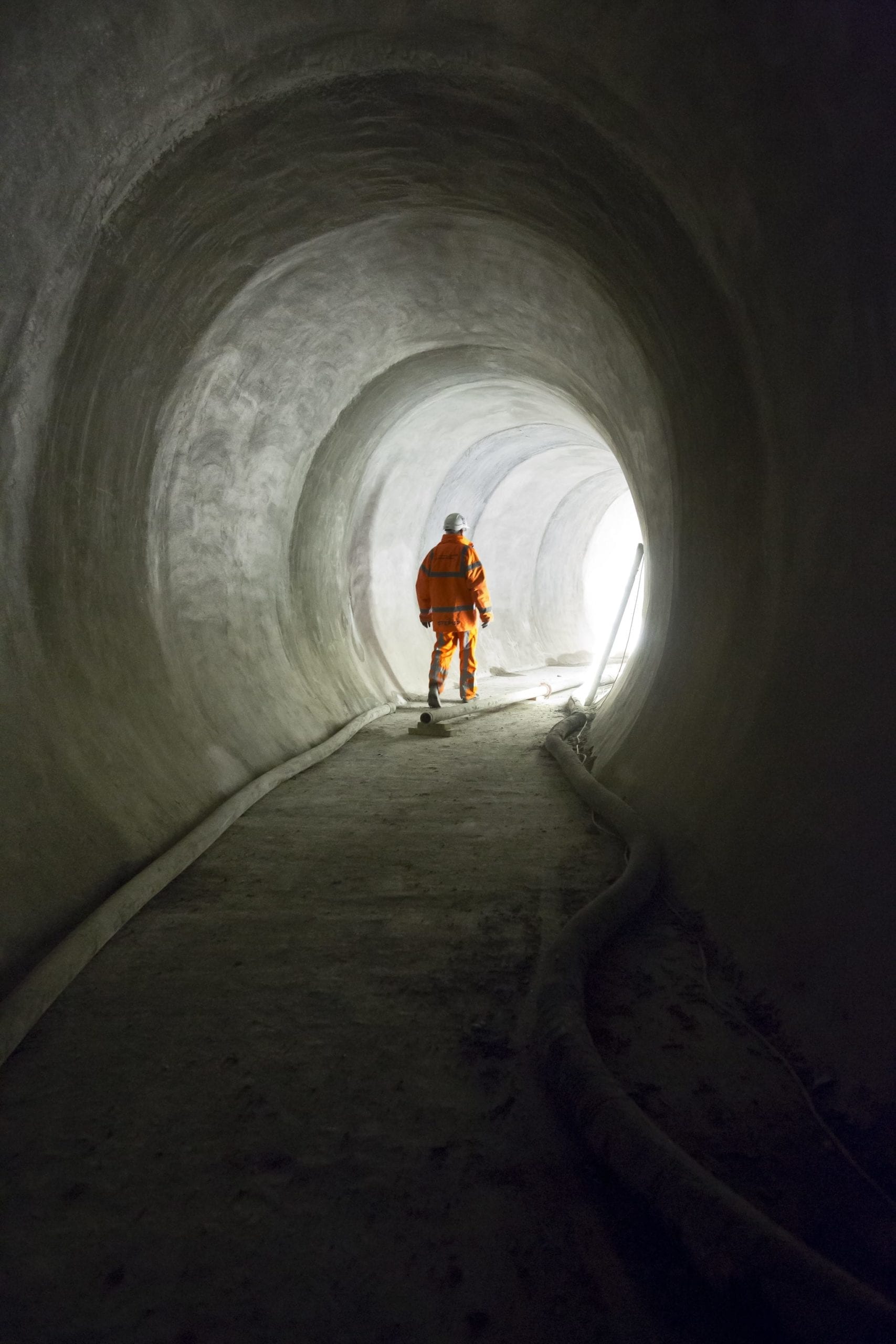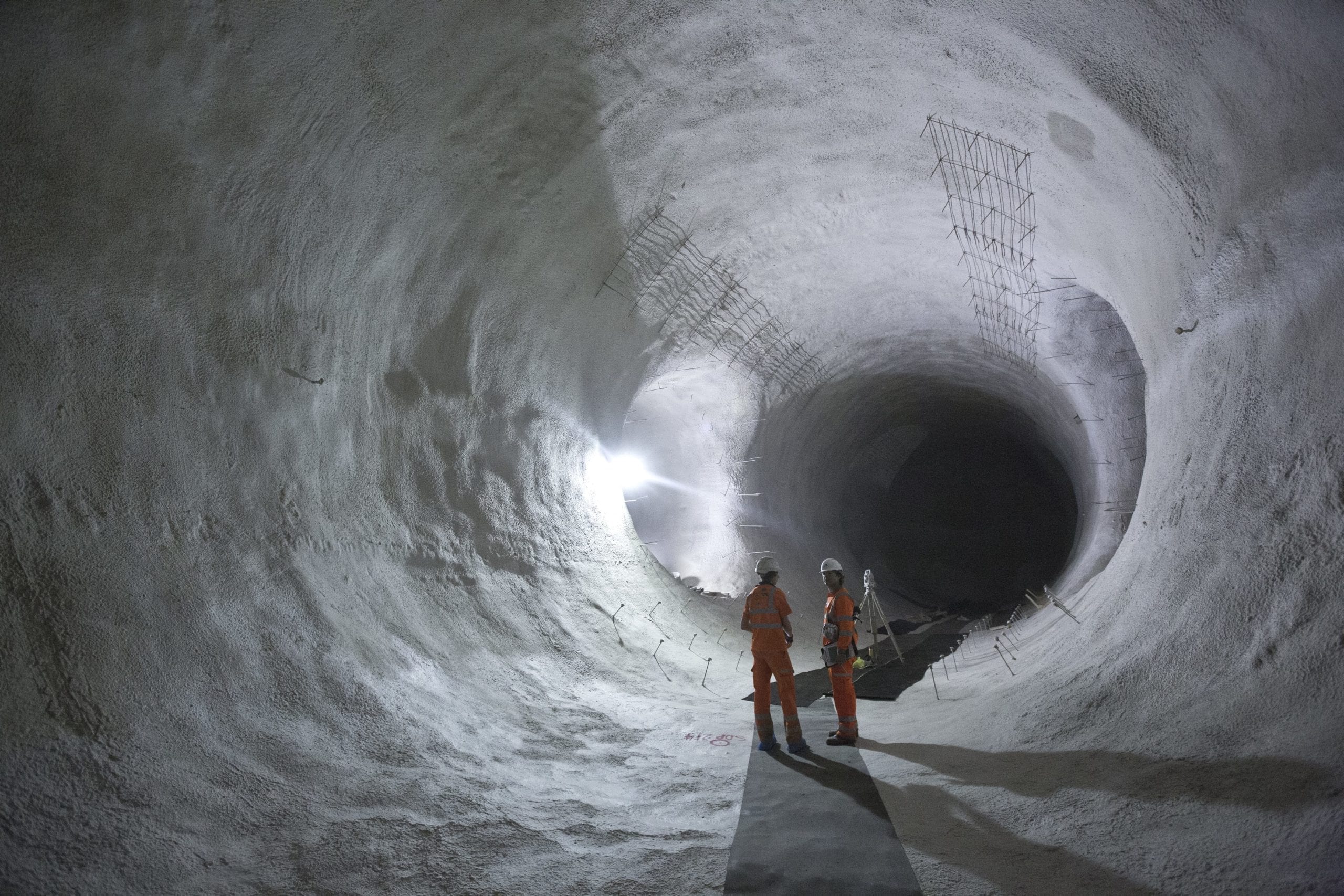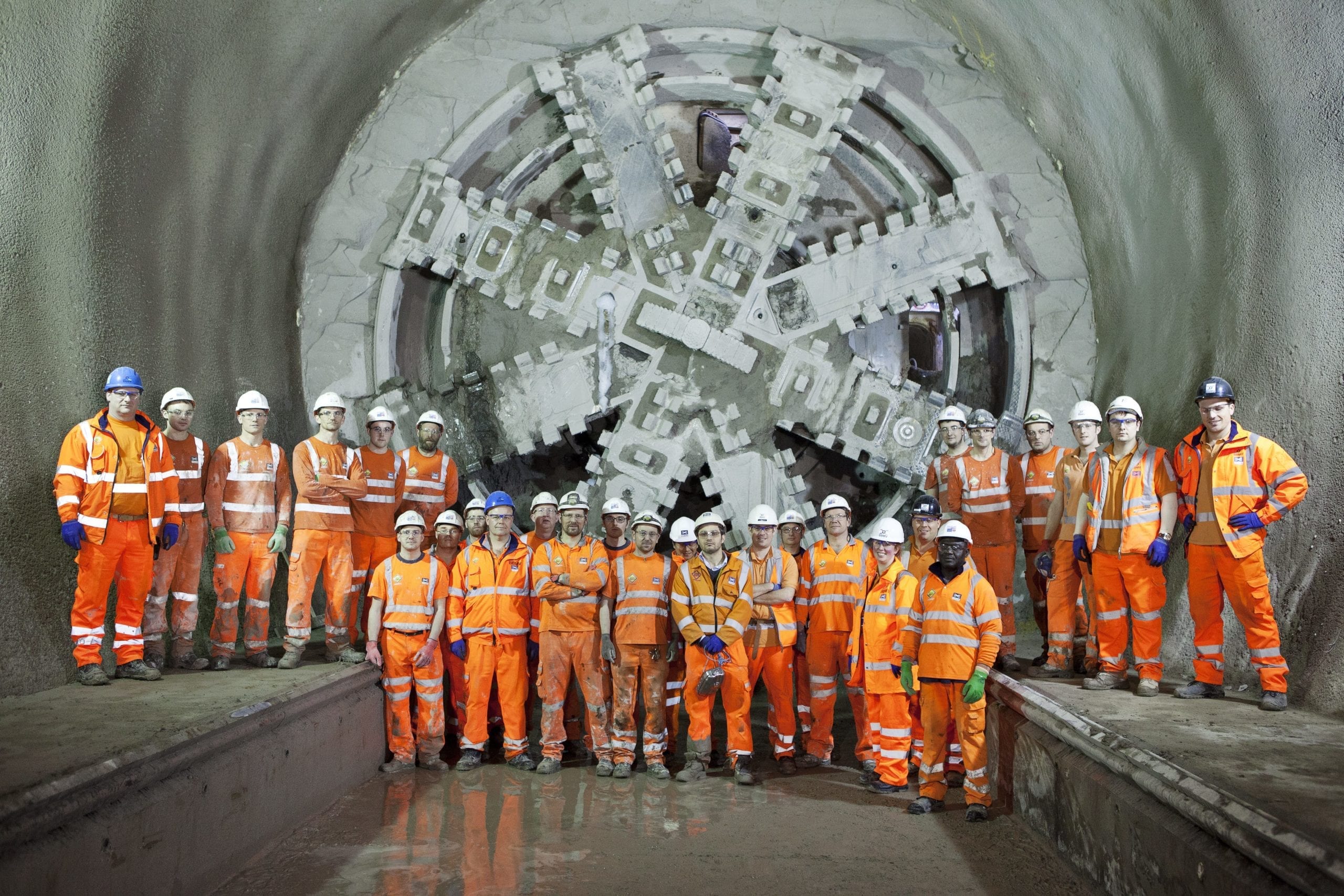As Londoners go about their daily business above ground, unbeknownst to many of them, construction workers below are busy excavating, navigating and building a network of tunnels for the much-anticipated Crossrail.
“You pop out of a hole in the middle of Oxford Street and no one knows where you’ve come from,” marvels John Zammit, one of the photographers charged with documenting its progress. “It’s a completely different world down there.”
Transport for London subsidiary Crossrail has spent £14.8bn building that world, which will add a capacity of 10 percent to London’s railway network when it opens in 2018, and will be the most extensive addition to the city’s public transport system since World War II.
Spanning east to west from Shenfield and Abbey Wood through central London and out to Heathrow and Reading, the subterranean course measures 100km, and Zammit has followed the entire route – carrying an 80lb camera bag, kitted out in safety gear from head to toe – hard hat, protective glasses, industrial boots, and toting an MSA self-rescue breathing unit and a carbon monoxide monitor, “just in case there’s dangerous gas”.

Crossrail is publicly funded, so the organisation in charge requires each of its tendered contractors to have their work professionally photographed, supplying the images on a monthly basis. The organisation has also worked directly with photographers to shoot PR images, which are used to promote the project and keep the public informed. Head of photography at London’s Absolute Photography, and with experience of shooting projects such as the London Olympics, Zammit was an obvious choice for both. “Visual imagery is at the heart of Crossrail and plays a critical role in demonstrating our continued progress below ground to Londoners,” says Will Parkes, Crossrail’s external affairs director. “The construction of the new tunnels and stations has generated some fantastic imagery, whether that be the lowering of a tunnel-boring machine down a 40m shaft in the Docklands, or the excavation of a future station platform under Oxford Street.”
Some of these images are currently on show in a multimedia exhibition at the London Transport Museum, which will stay open until August. “Crossrail commissioned the exhibition because it realised there is a beauty to [the construction process],” says Zammit, but the show also includes portraits of some of the people working on it. The finished project will include photography in its very fabric too, because Crossrail is working with galleries such as Gagosian and White Cube to include art by artists such as image maker Douglas Gordon in its eight central stations.
The sheer scope of the new line, the noise, the dust and the danger it involves, have made it a difficult project to shoot, says Zammit. He’s been working on it for nearly four years but still describes the site as “a completely alien environment”, and every moment he spends in it is “a culture shock”. Working with a Canon 5D Mk III, he’s found that the best approach is to go back to basics, reducing “all your photography back to its simplicity – space, juxtaposition, lighting – you get an amazing composition from it”. “It’s an important piece of social documentary,” he adds.

Zammit describes the people working on the project as a close-knit mining community; including nearly 10,000 workers over 40 sites, this community has links back to decades of London building projects through their fathers and even grandfathers. James O Jenkins, another photographer working on the project, says these people add an important human element to an environment he also sees as an alien place – like Star Wars or a moonscape – generally commissioned direct by Crossrail when they reach a breakthrough point, he nearly always includes people in his shot, be it workers going about their business or visiting corporate leaders or politicians. “My aunt worked on the Eurotunnel,” he says. “I remember her showing me photographs of when the French and English tunnellers met.
“It’s important to document something like this because it’s a brand new transport system for London and clearly changes the way Londoners travel across the city,” he adds. “The full collection of Crossrail photographs will be an amazing set of images that needs to be looked after and collected. It should be archived.”
“Crossrail has now accumulated a very extensive imagery library comprising thousands of images,” says Parkes. “On completion of the project, responsibility for the Crossrail photography archive will transfer to Transport for London and the London Transport Museum, so the images we have captured will be available for generations to come.”
There are also rumours that the British Library will end up getting involved, and while this has yet to be confirmed, Laurence Ward, principal archivist at the London Metropolitan Archives, says, “There wouldn’t be any shortage of organisations looking at that collection.” Crossrail used the LMA’s own resources to research the origins of 25 skeletons discovered under Charterhouse Square in Farringdon, showing that “they had that sense already of the impact of the project on history”, says Ward. The skeletons turned out to date back to the 14th century and are thought to have been buried in a plague pit.

Ward likens Crossrail’s documentation to the Metropolitan Railway archives held at the LMA – a collection that includes images of workers standing on the tracks they had built. “We look at those photographs today and it brings the past to life, gives us a sense of how people lived and worked,” he says.
For Zammit, one of his best moments was seeing one of eight 1000-tonne boring machines lowered into a tunnel by one of the biggest cranes in Europe: “That was something to witness,” he says. “It’s maybe my best shot.
“I like to look back at anonymous photography from the turn of the last century, which captures a world that we can only imagine, giving us a glimpse of what it was like,” he adds. “In 100 years’ time, people will look at these images and think, ‘That’s how it was done, what a place.'”
Breakthrough: Crossrail’s Tunnelling Story is on show at the London Transport Museum, Covent Garden, London. Admission to the museum costs £16 for a year pass. Details here.
